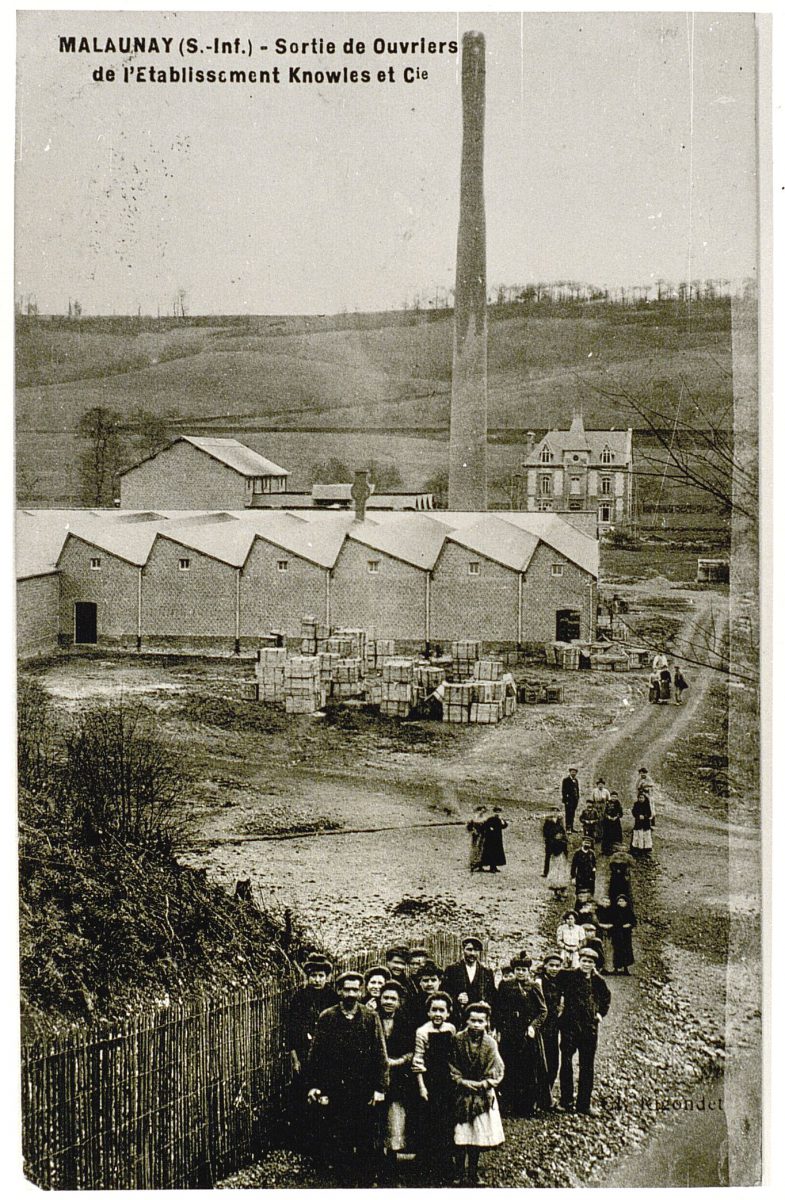Knowles’ company in Malaunay Historical Background Malaunay, exit of workers in the establishment Knowles & Co., 20th century (B&W Photography)…
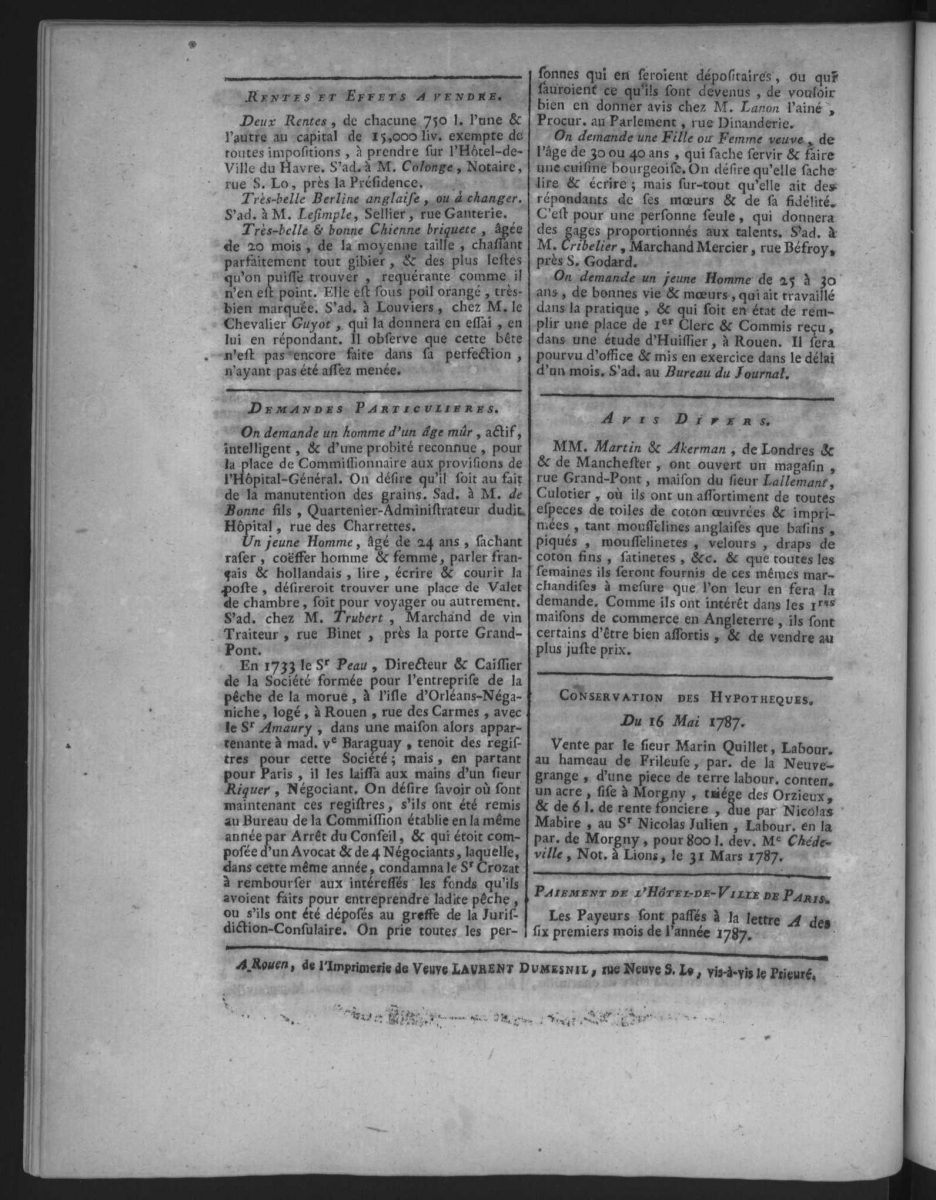
Opening of an English store in Rouen
Advertisement for the opening of a store in Rouen, rue Grand Pont, by two Englishmen, July 7 1787.
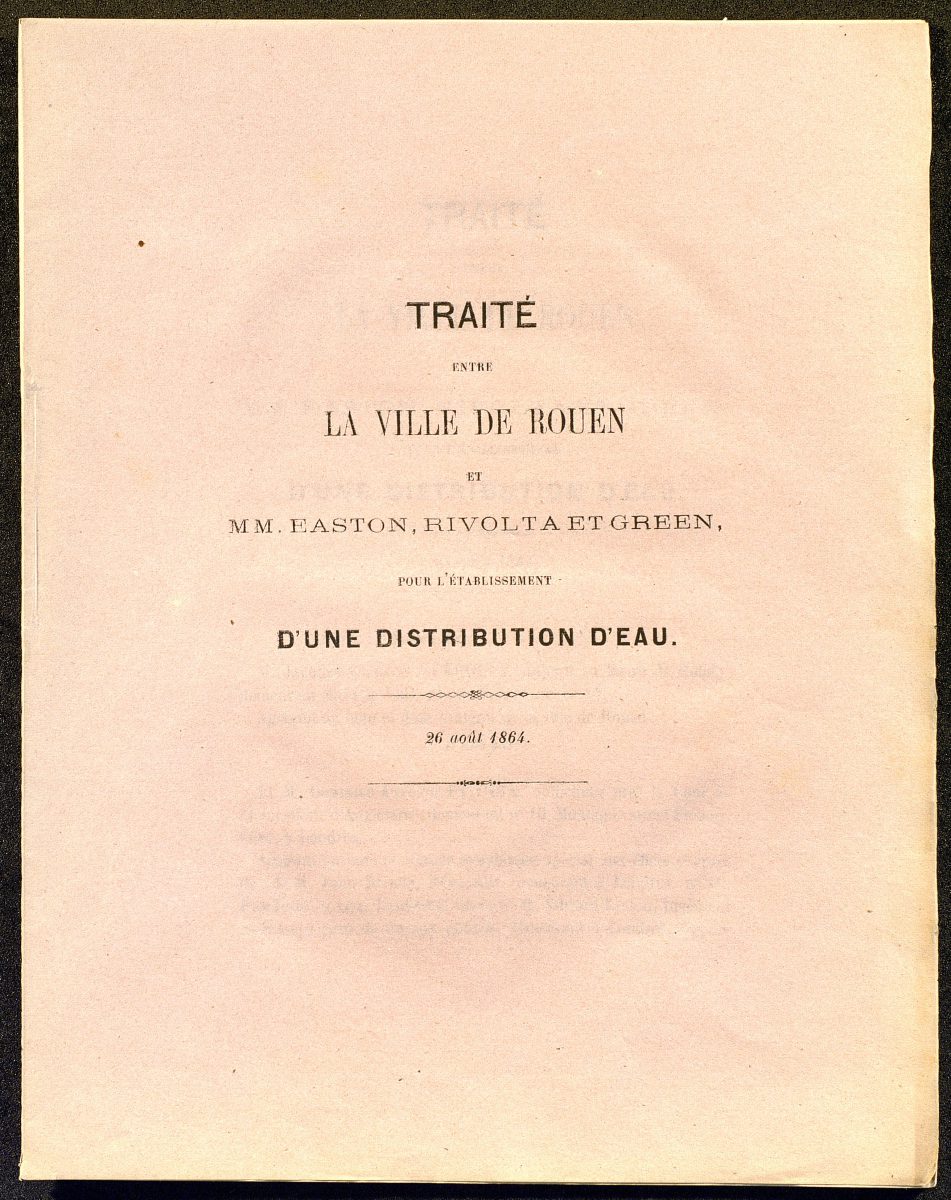
Treaty between Rouen and MM. Easton, Rivolta and Green for the establishment of a water supply, 26 August 1864
After several studies about the project of drinking water distribution in Rouen, the town assigns in this treaty the concession of water supply to M. Easton, Rivolta and Green in 1864. The object of the concession covers the distribution and sale of water for public and private needs.
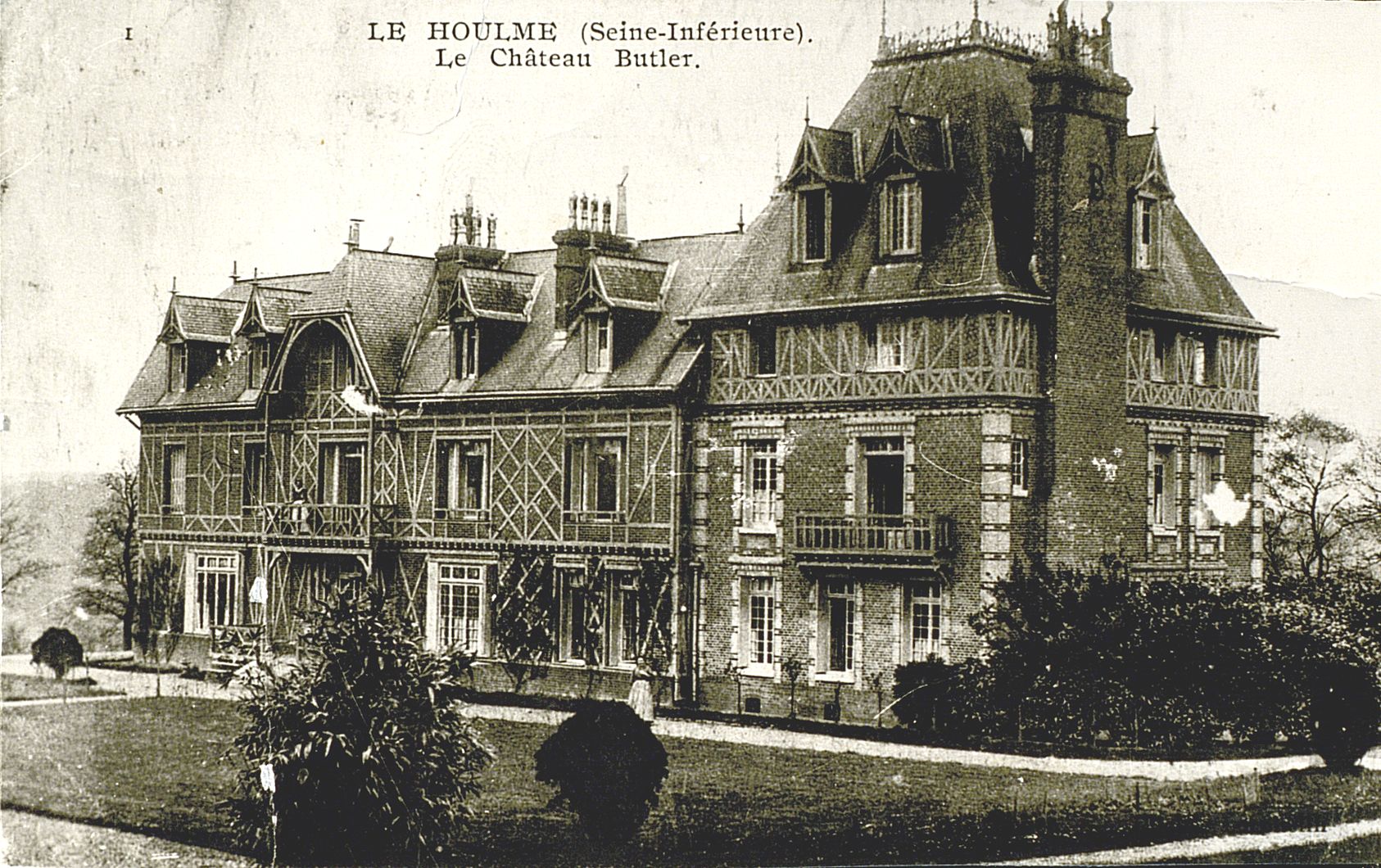
Butler’s castle and city, Le Houlme
Installed at Le Houlme since 1883 on the site of an old mill, Henry and Alfred Butler associated with leaving Charles and Thomas Holliday extend the site with the construction of new workshops, a working class city and two employers’ homes
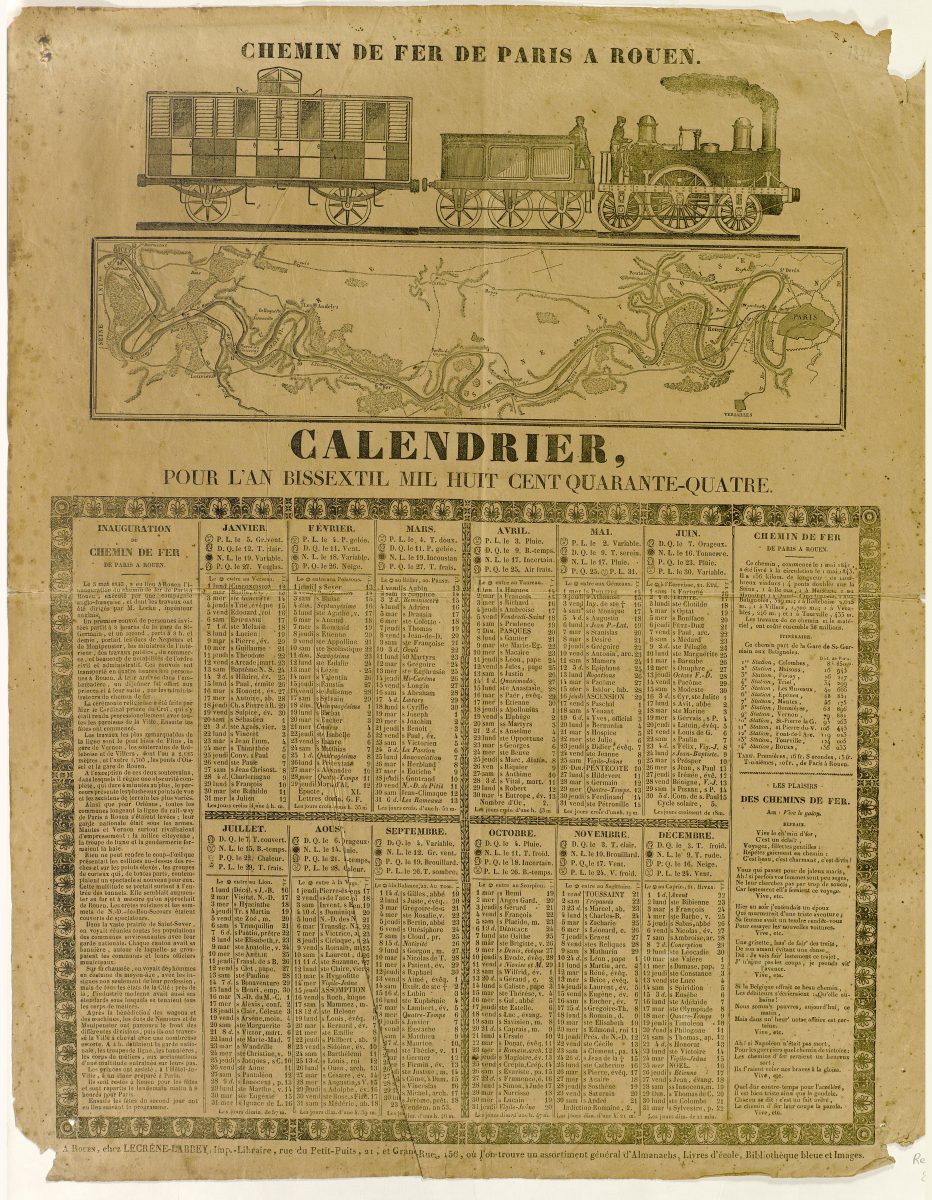
Calendar of Paris – Rouen railway
This 1844 calendar depicting a railway commemorates the start of train travel in the Lower Seine.
The line, almost 130 kilometres long, follows the Seine valley. Work started in May 1840 and was in English hands.
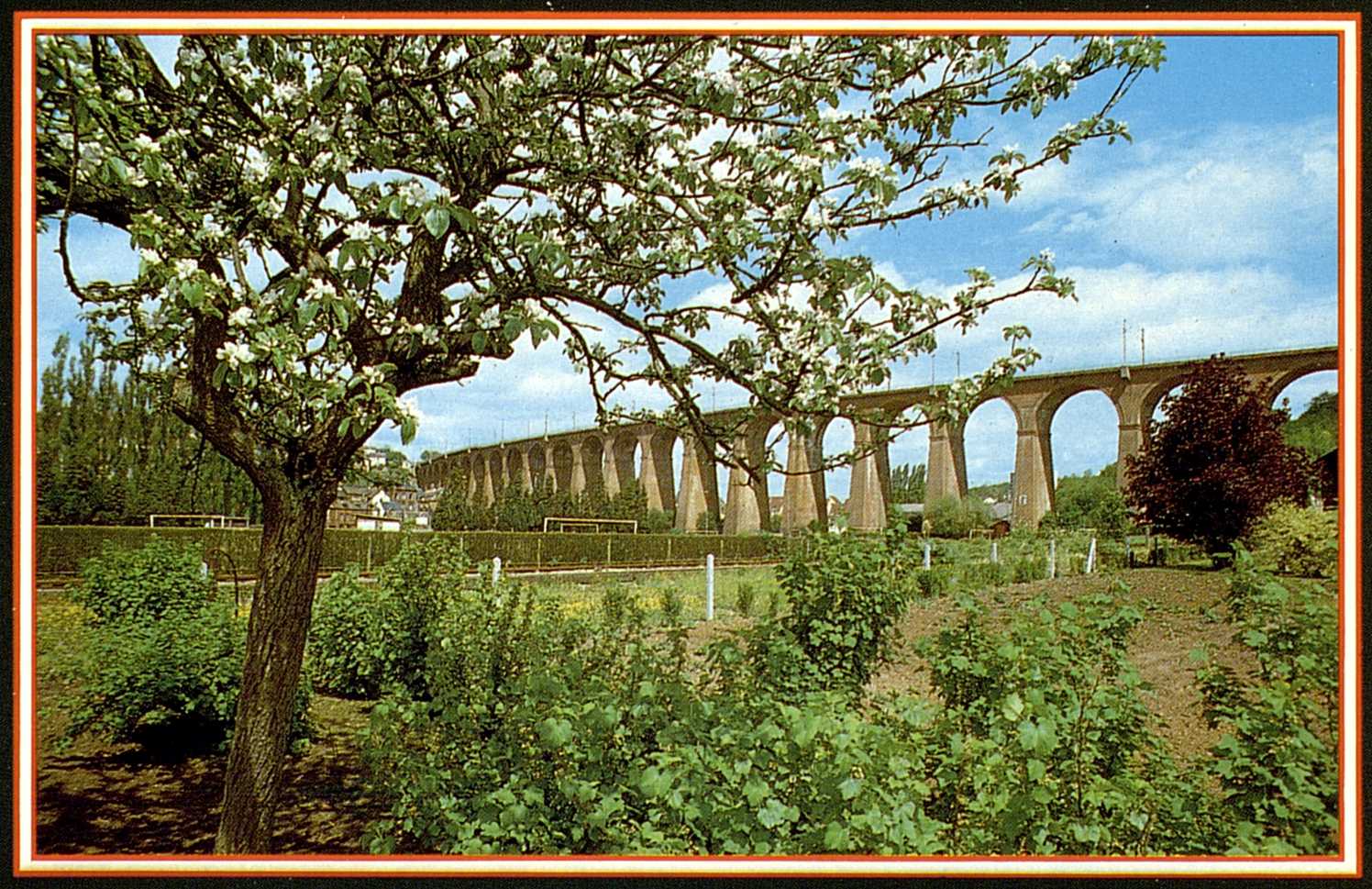
The “Nouveau Pont aux Anglais”; Malaunay, the arches of the viaduct
Five long tunnels had to be dug and six viaducts constructed over the Seine in the building of the Paris to Rouen railway.
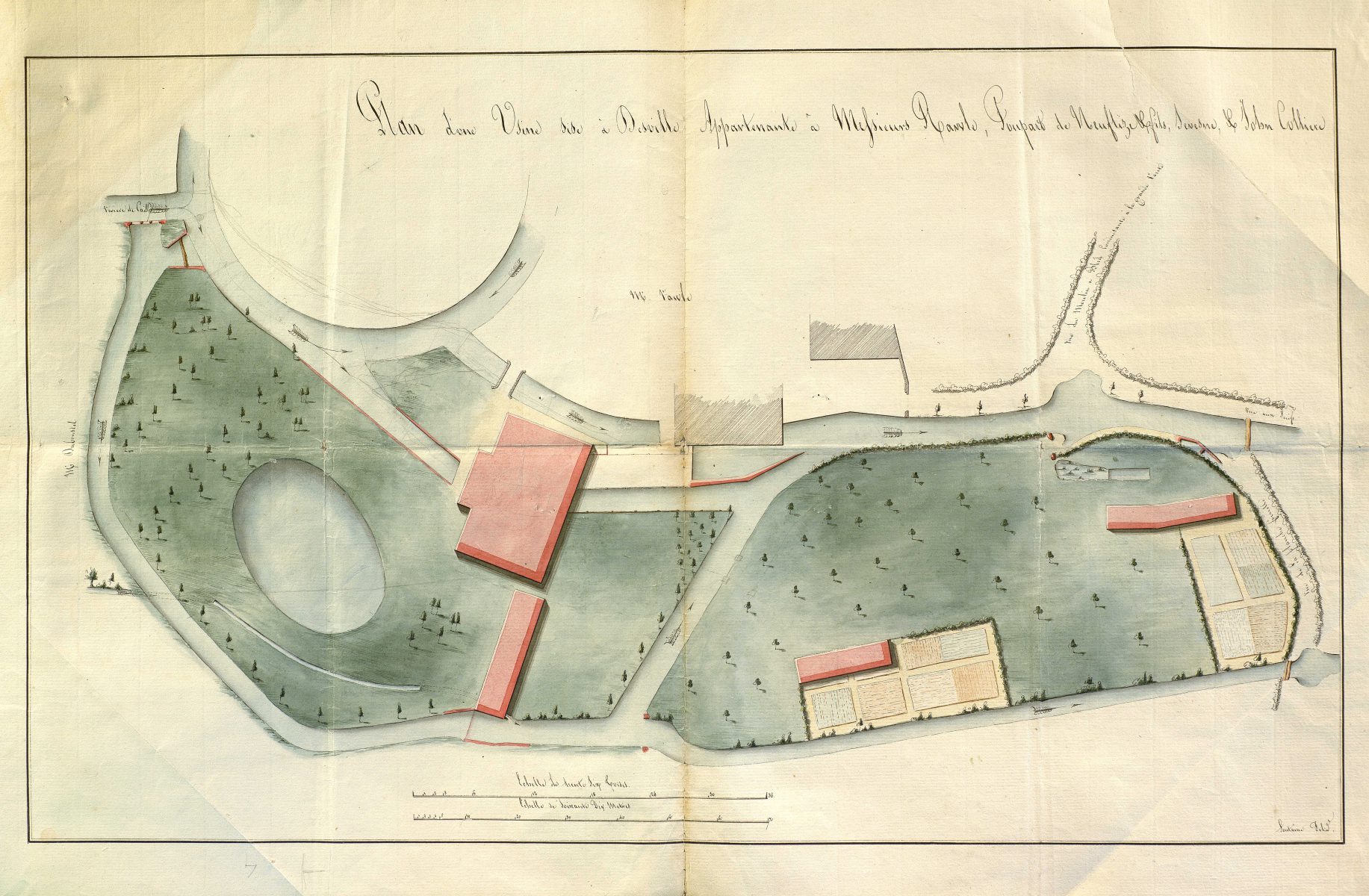
Plan of a factory in Déville owned by Messrs. Rawle, Poupard de Neuflize and son, Sevesne and John Colliere
Valentin Rawle was the first person to set up water-driven spinning Jennies in the Rouen area. They were visited by Napoleon himself. Rawle had opened his first cotton mill, holding 6,000 spindles on two floors, in 1798.
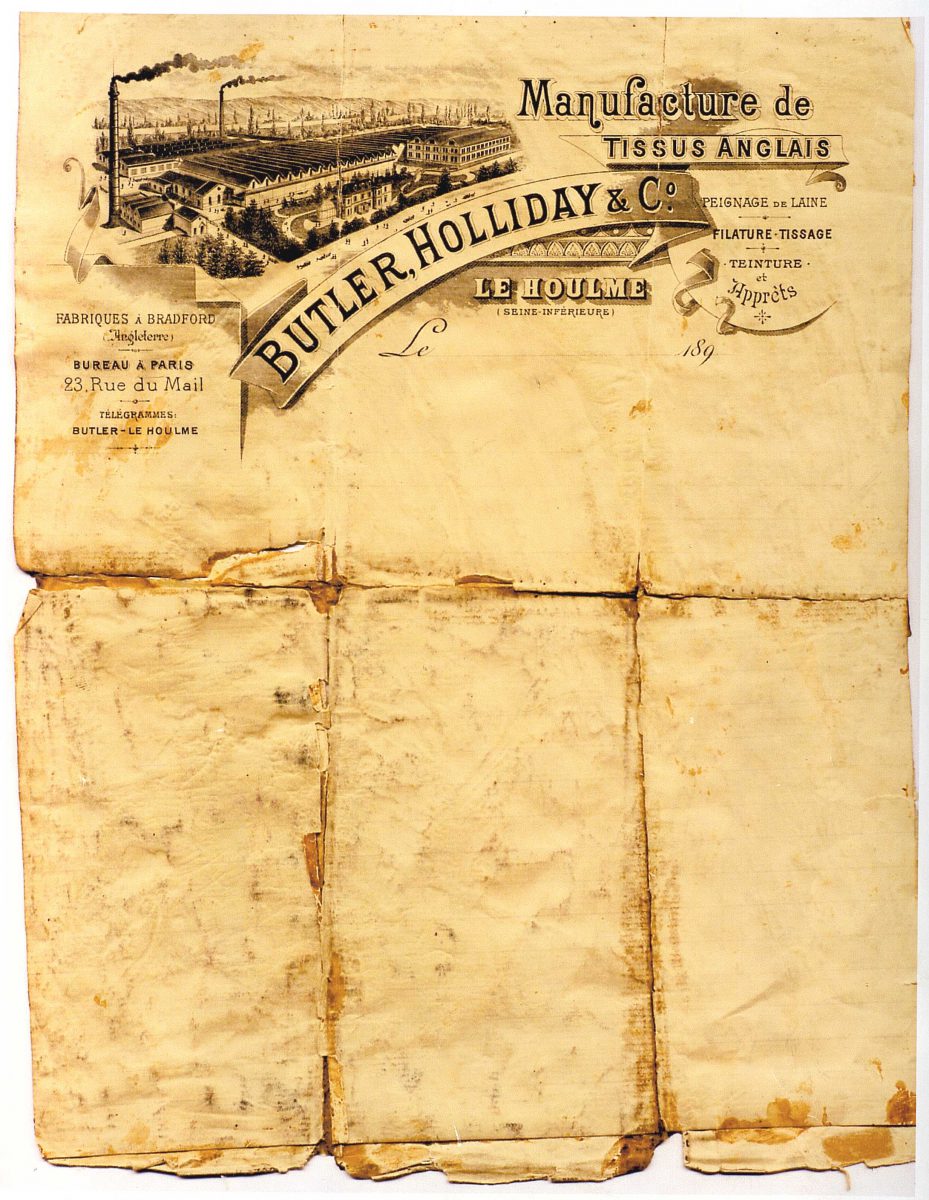
Butler-Holliday & Co : Company incorporation’s deed
The Butler and Holliday families were well-known English industrialists: the Butlers produced textiles in Bingley while the Hollidays made chemicals in Huddersfield.
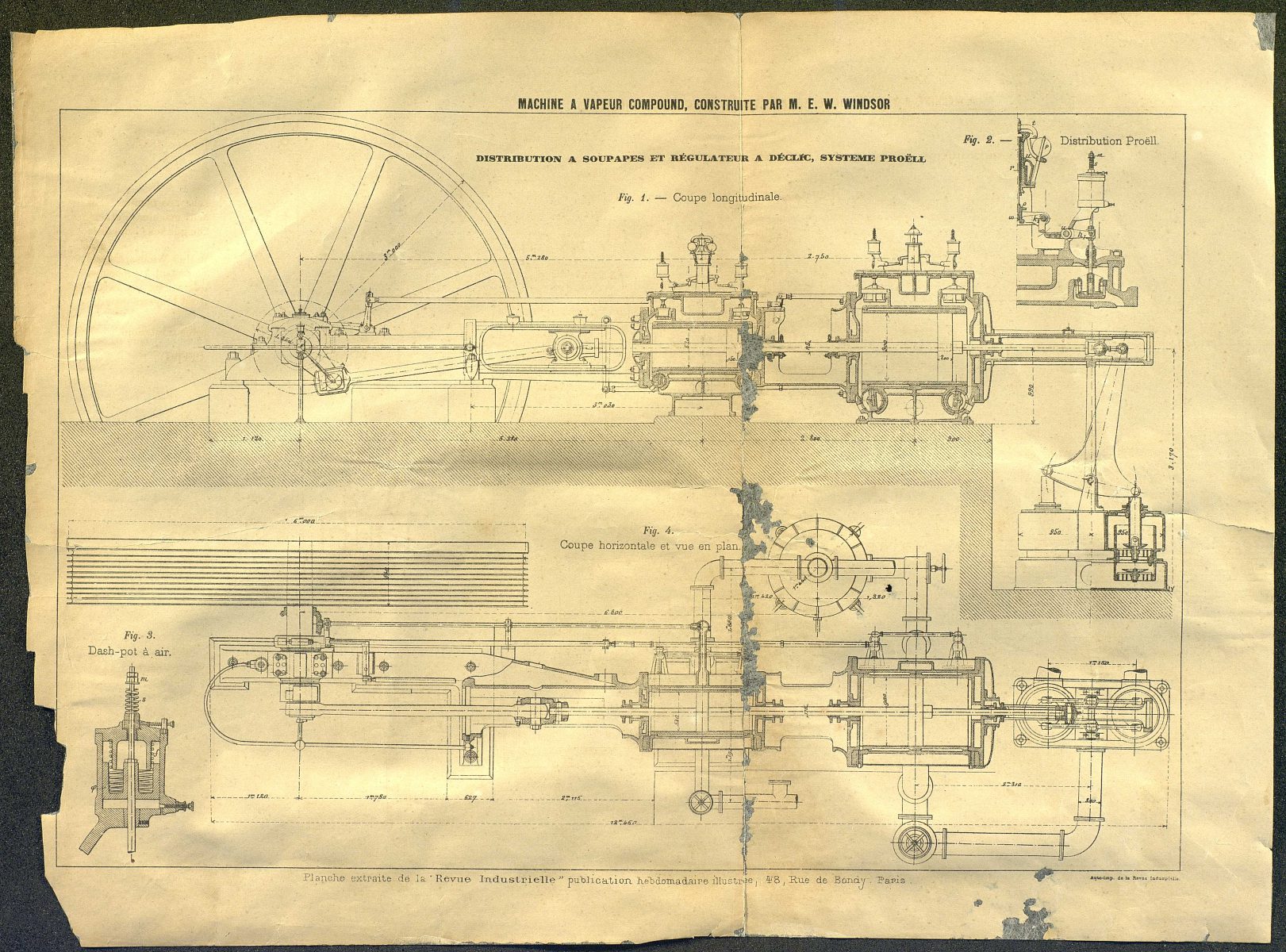
Compound steam engine built by M. E. Windsor (English designer/engineer based in Rouen), plate taken from the “Revue industrielle” produced during the 1889 World Fair
he plate shows a two-cylinder steam engine built by E. W. Windsor. The construction of these machines made the name of the company, and of Rouen engineering.
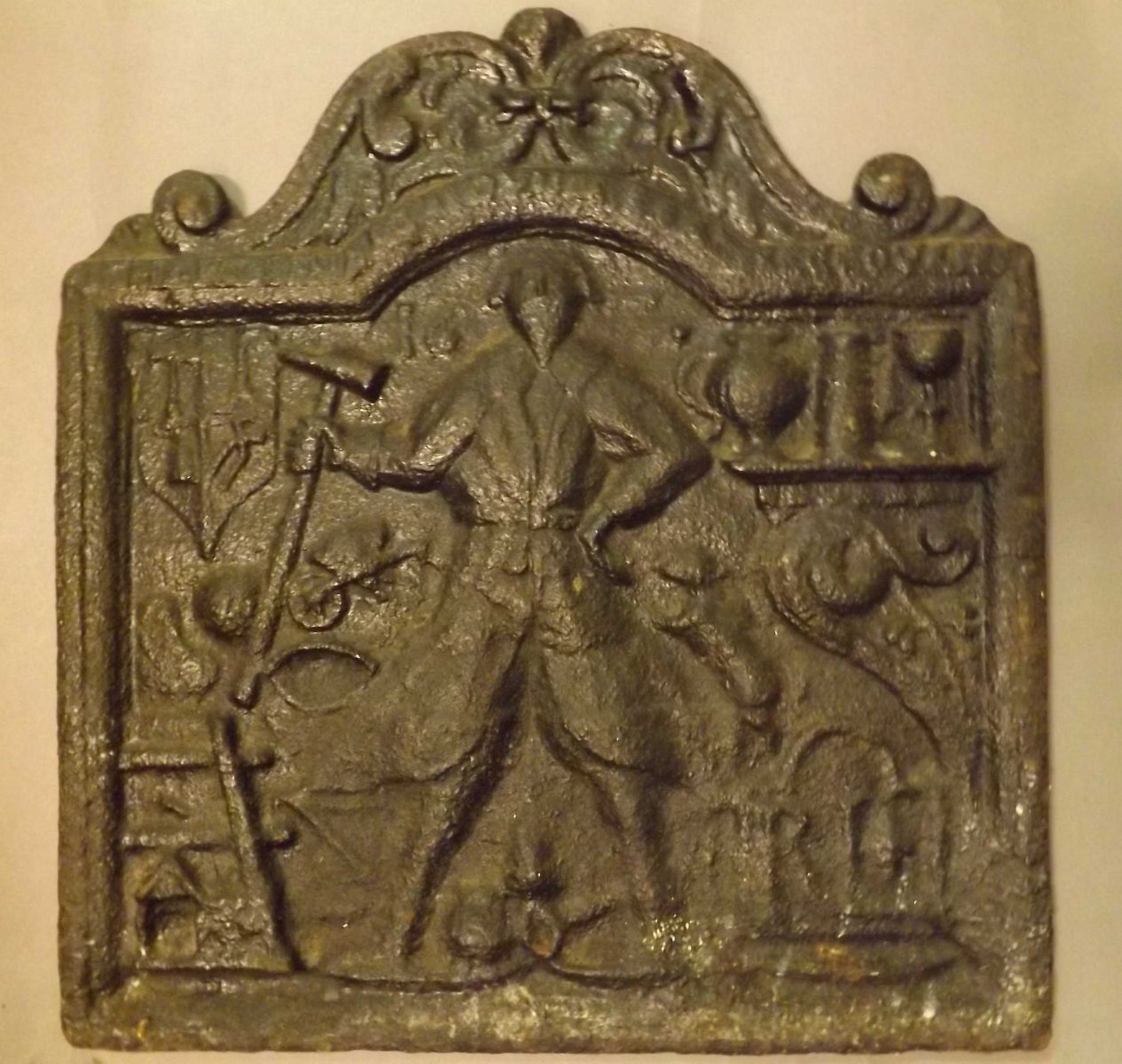
Fireback
Fireback showing Richard Lennard, the founder at Brede Furnace, with the tools and products of his trade. His initials appear in a cartouche in the bottom right hand corner. A furnace is shown at bottom, and a wheelbarrow is tipping materials into the top of the furnace.
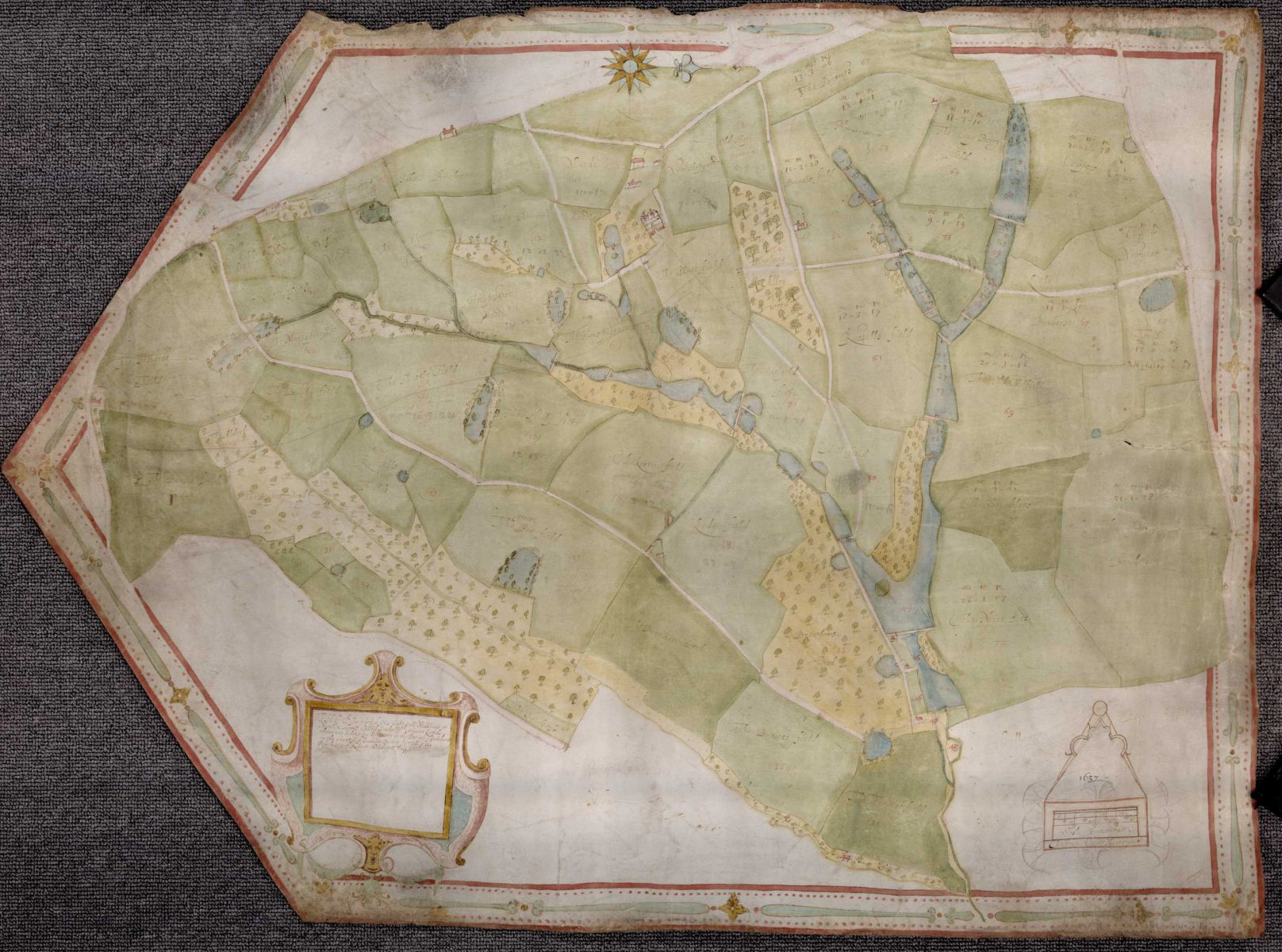
Map of Robert Wildgoose’s capital messuage called Iridge in Salehurst by Ambrose Cogger
This map clearly shows the complex system of artificial ponds created to service the Iridge furnace.
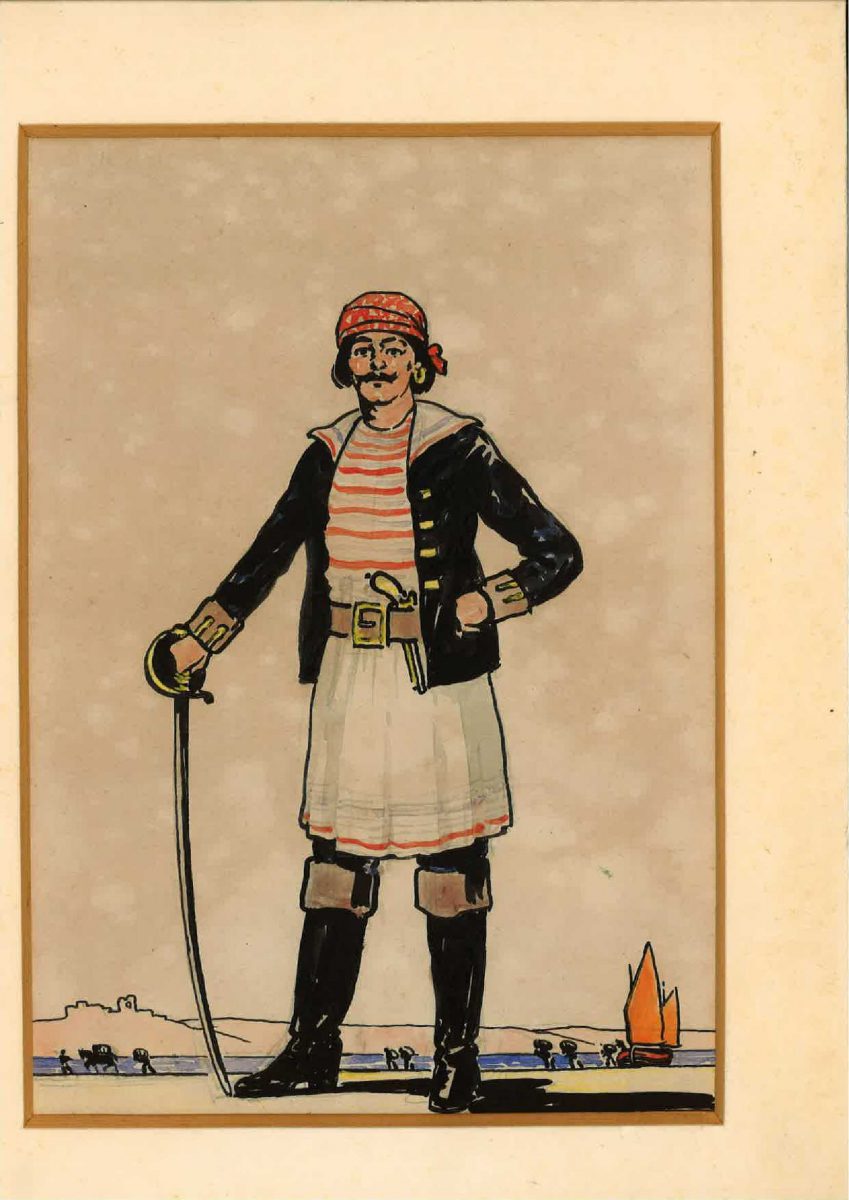
Drawing of a smuggler
Romanticised drawing of a smuggler, with the outline of the shore with Hastings Castle, and a run in progress from a lugger, by E. Leslie Badham (1873-1945), pen and ink.
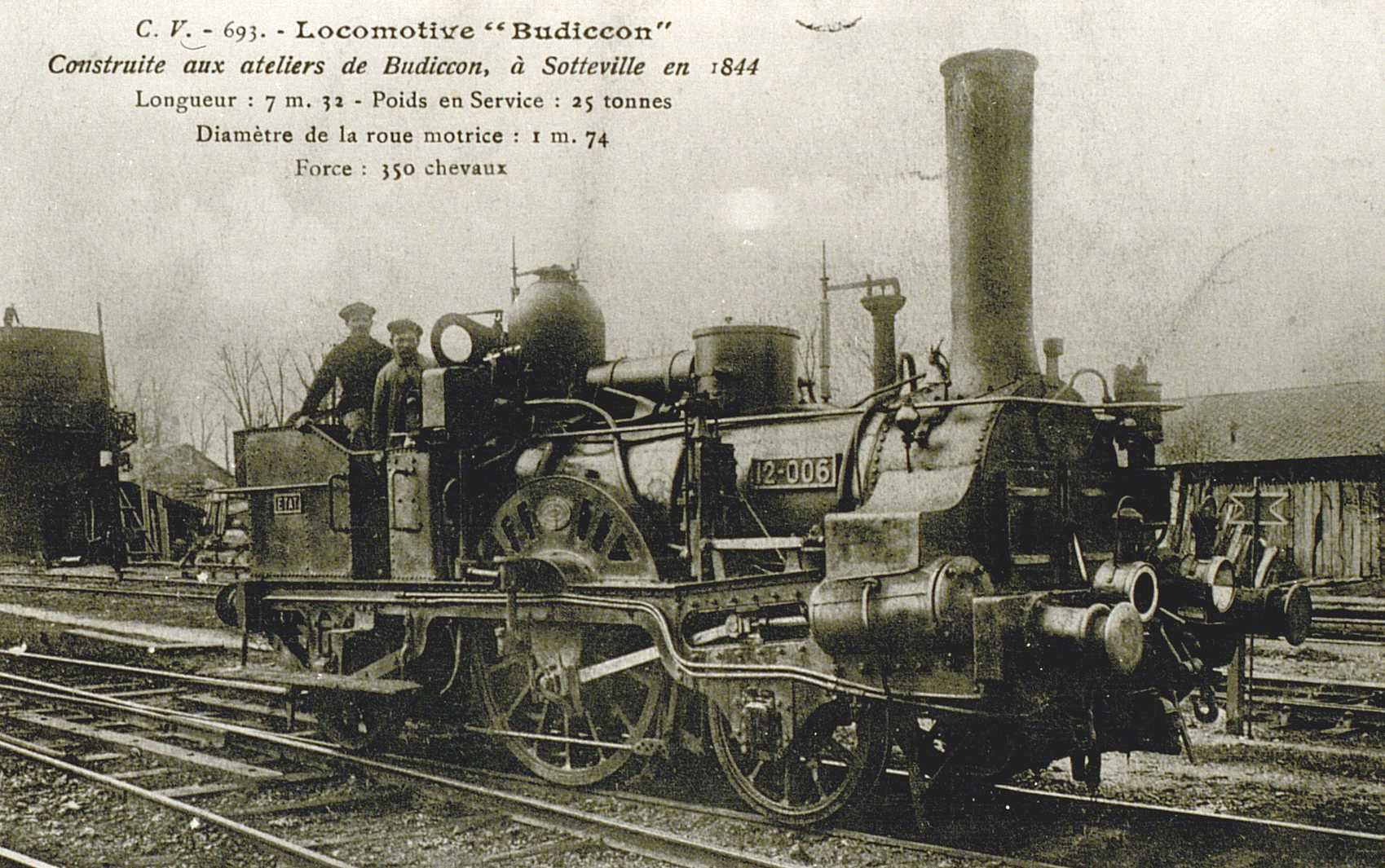
Budiccom locomotive
The Compagnie de Rouen had to be able to produce carriages and locomotives in order to be able to run the line. The backers of the proposed railway line between Paris and Rouen again turned to England, which already supplied many of the locomotives used in France.
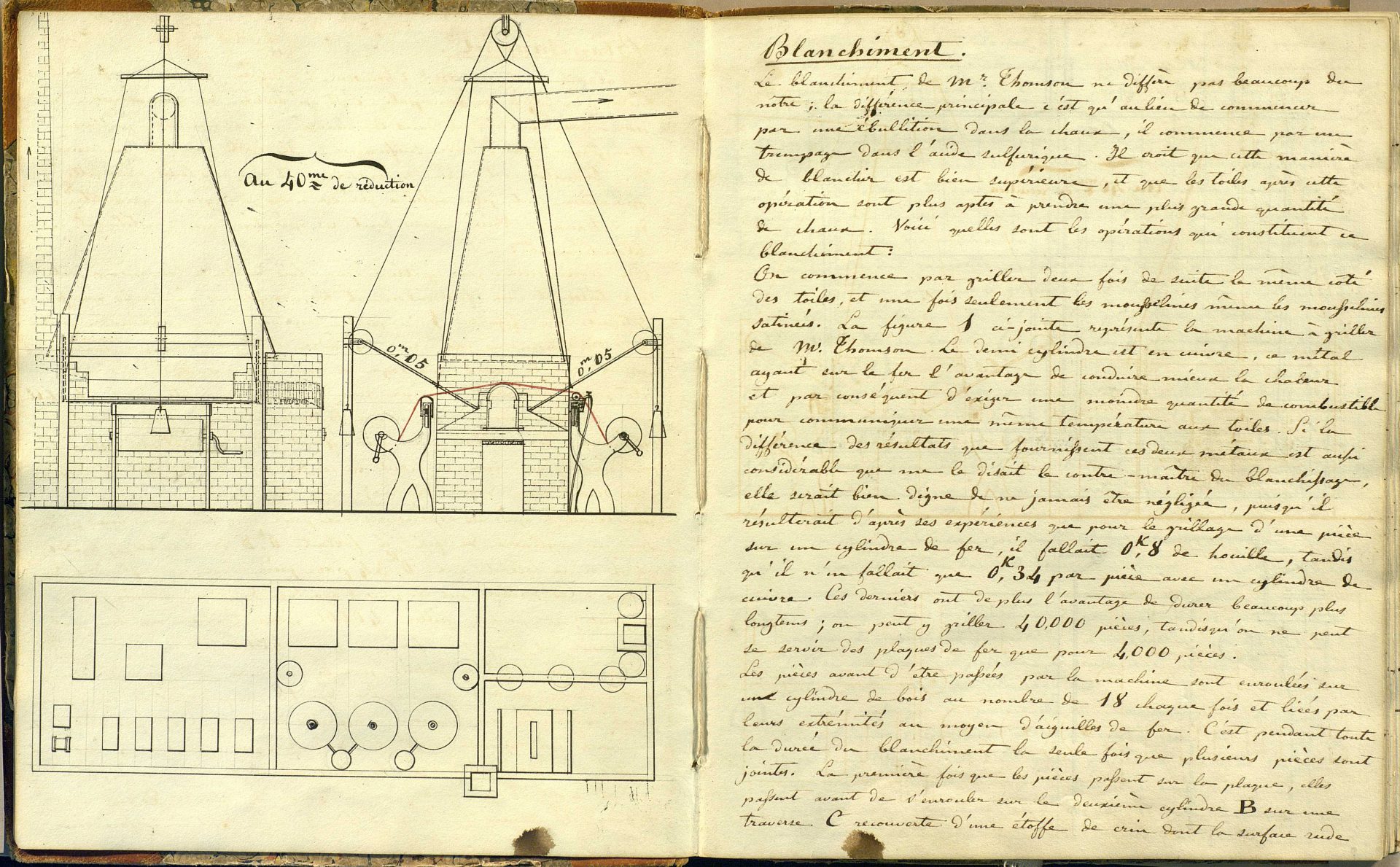
Journal of notes made in England by Camille Koechlin on the premises of Messrs. Thomson, Chippindall & Co. near Manchester
Camille Koechlin, a member of a textile-manufacturing family from Alsace, used this journal to record his observations on a trip to England during which he visited the premises of Thomson, Chippindall & Co. near Manchester.
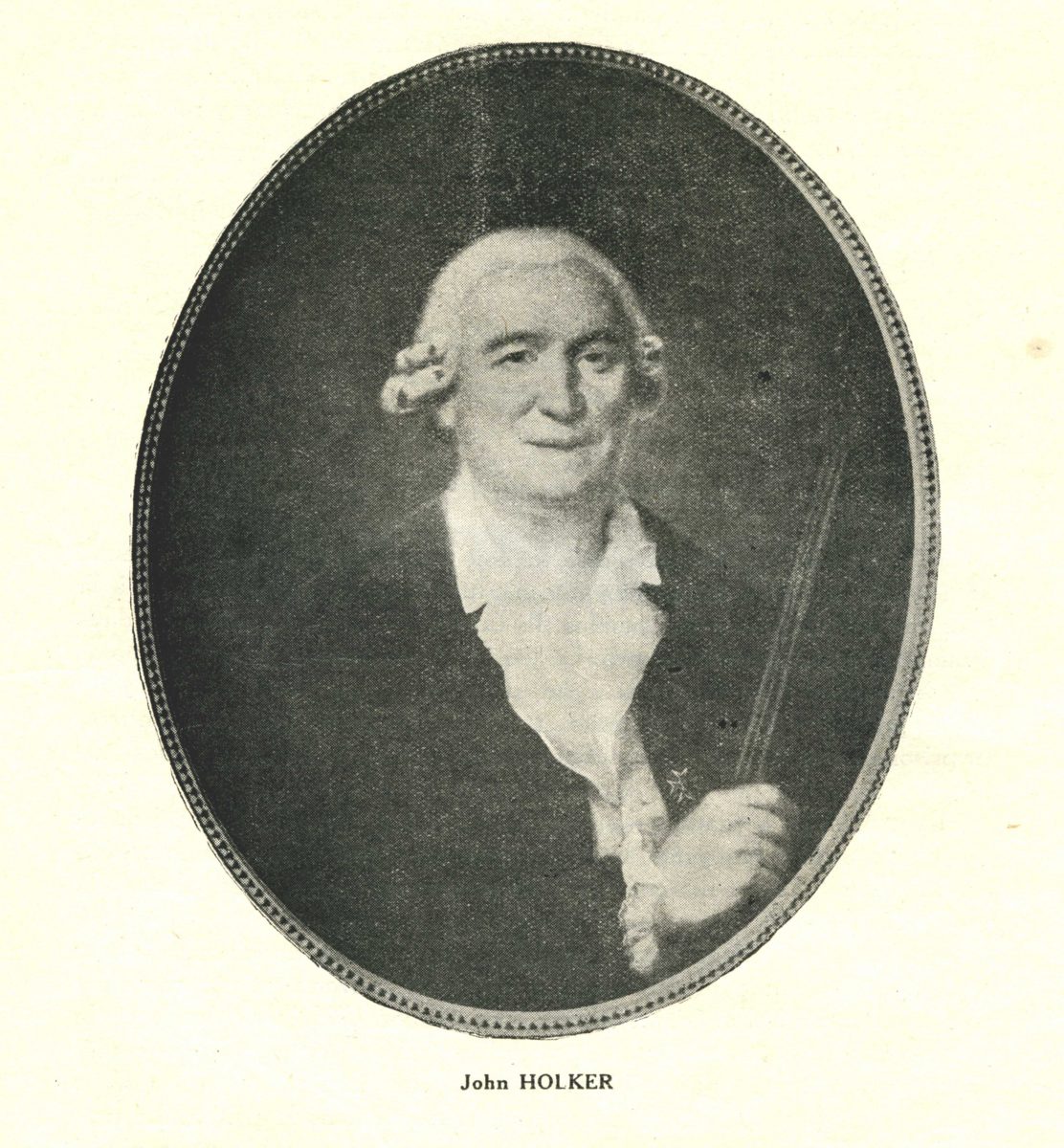
John Holker’s coat of arms and his letters of ennoblement, registered by the Cour des Aides
Born in Stretford in England and a supporter of the Stuart claimant to the throne, John Holker had to leave his native land for political reasons. When he arrived in the capital of Normandy he joined forces with an industrialist of Darnétal to set up a manufactory.
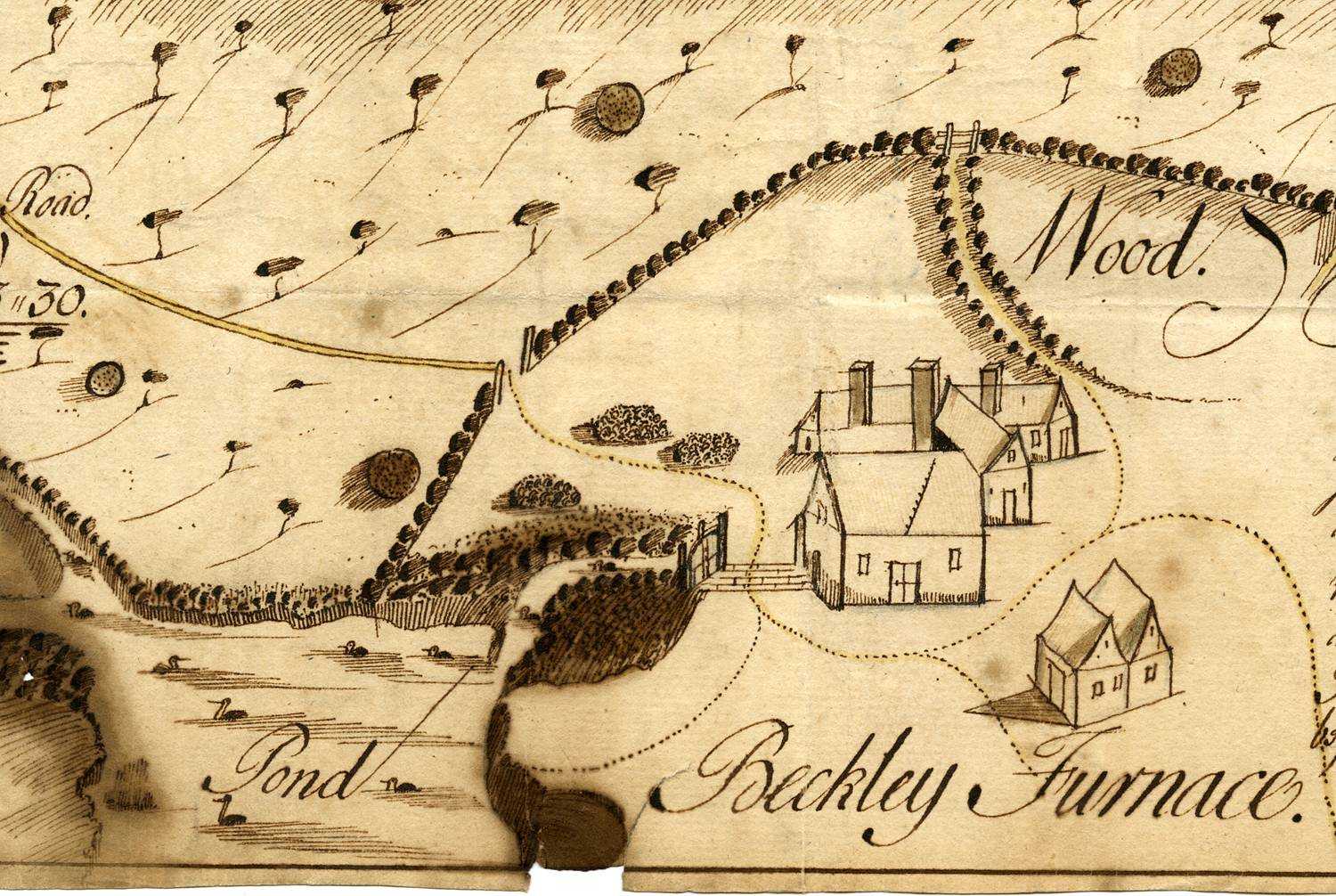
Map by Samuel Cant of a wood and land near Beckley Furnace
Map by Samuel Cant of a wood and land near Beckley Furnace, 1746, showing the pond at the bottom. …
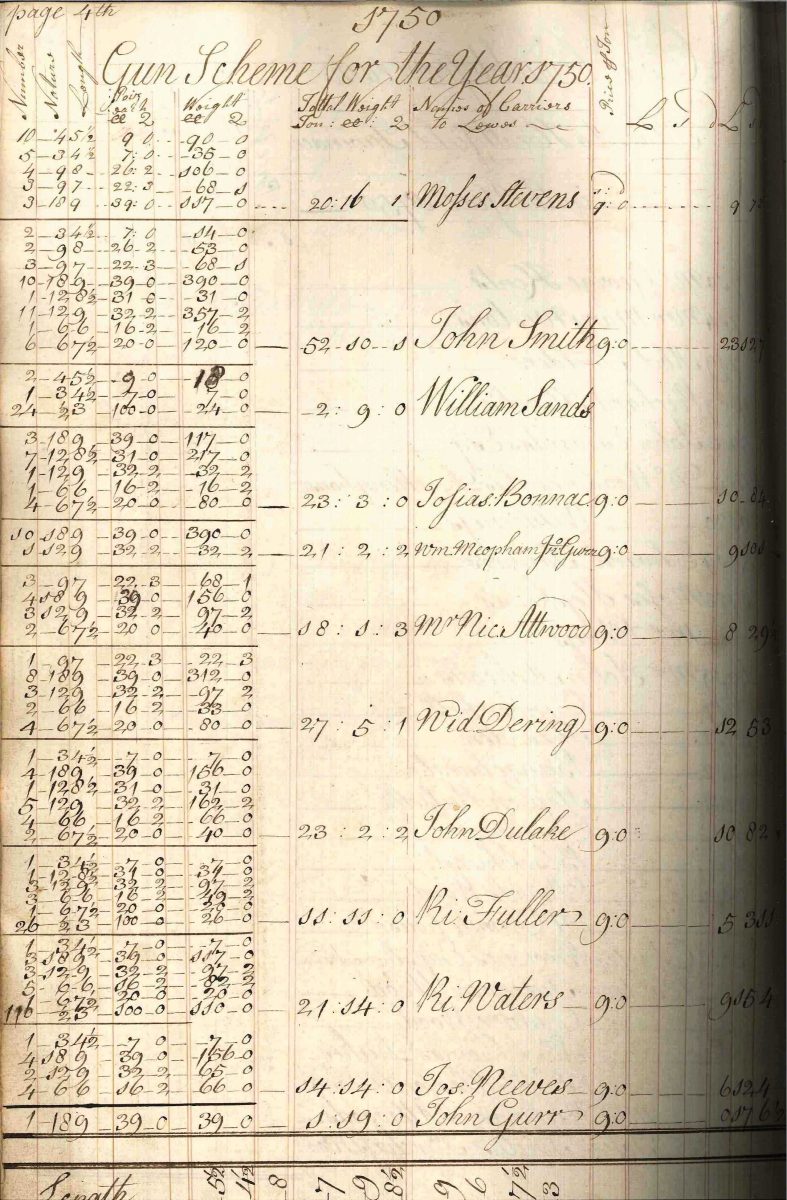
Account of the receipts and payments of Henry Westall for Sir William Sidney’s ironworks at Robertsbridge and Panningridge
The Robertsbridge and Panningridge ironworks were built by Sir William Sidney, who had acquired the lands of Robertsbridge Abbey in…

